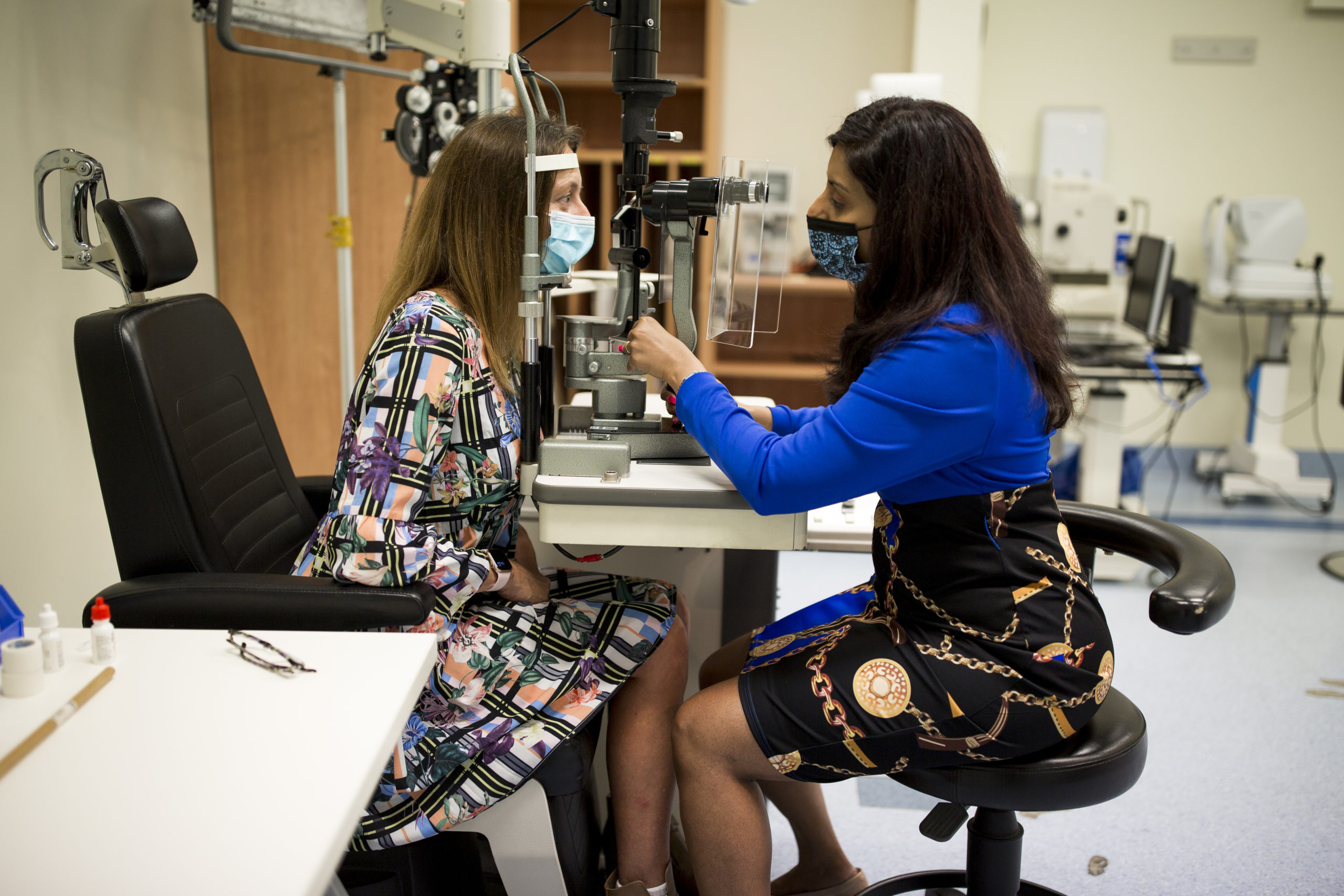This website uses cookies so that we can provide you with the best user experience possible. Cookie information is stored in your browser and performs functions such as recognising you when you return to our website and helping our team to understand which sections of the website you find most interesting and useful.
NEWS
Chasing down keratoconus
Researchers are using artificial intelligence to detect keratoconus earlier and improve the outlook for patients with the debilitating corneal condition.
Erica Blake’s daughters often wear bright pink socks in athletics races so she can see them from a distance.
Erica was diagnosed with keratoconus at 17 and has since dealt – often creatively – with poor vision and a raft of expensive treatments, including two full corneal thickness grafts in the 1990s.
About keratoconus
The debilitating eye disease causes the cornea to thin and gradually bulge outward into a cone shape. This distorts vision and may eventually require a corneal transplant.
Before the corneal transplant, Erica, now 45, struggled with contact lenses.
The transplant succeeded initially, but her vision eventually deteriorated, requiring multiple transplants to reshape the cornea.
More recently, Erica has used modern contact lenses and may now consider a surgically inserted version.
Her sister Prue, 53, also has keratoconus and has had transplants and a lifetime of eye issues.
“Due to the complexity of my eyes my surgeon is giving further consideration to all options,” Erica says.
Identifying risk factors
The Horsham-based sisters are now helping others as part of CERA’s keratoconus research program.
This may also include Erica’s daughters Della, 15, Acacia, 13, and Gretel, 9. All have signs of astigmatism and Della, who wears glasses, has all the keratoconus risk factors, including thin steep corneas.
Led CERA Senior Research Fellow Dr Srujana Sahebjada, the keratoconus research works to better identify genetic, environmental and clinical factors so it can detect keratoconus earlier, predict its progression, improve overall understanding, and better manage it.
Keratoconus mainly affects teenagers and young adults; one in 84 Australian 20-year olds has the condition.
The global prevalence rose five-fold from 1:2000 in 1986 to 1:375 in 2016.
When detected early, newer treatments that Erica and Prue missed out on, such as collagen crosslinking (CXL), which stiffens the cornea and slows its progression, can be offered.

Making a difference
Dr Sahebjada established the Australian Study of Keratoconus (ASK), now among the world’s largest keratoconus studies, in 2010.
The team is using advanced imaging, artificial intelligence and genetic technology to better detect the condition.
One project is using images to develop an algorithm for early keratoconus detection.
An algorithm was also developed to predict whether cases will progress from mild to medium or serious.
“Earlier diagnosis will improve patient prognosis and reduce keratoconus’ economic and social impact, which is huge,” says Dr Sahebjada.
In 2020 Dr Sahebjada continued to investigate in-house clinical data and developed AI algorithms that can accurately and automatically identify eyes with early stages of the condition.
Working with Professor Mark Daniell and Professor Paul Baird, Dr Sahebjada also continued to develop the first global keratoconus classification management system through the Keratoconus International Consortium they established.
It has more than 40 national and international members working to address gaps in keratoconus knowledge to prevent corneal blindness.
Reducing the impact of keratoconus
Erica is acutely aware of keratoconus’ impact.
For her it has included countless expensive procedures and hundreds of 3.5 hour drives to Melbourne.
She has also noticed more people diagnosed locally.
“If something goes badly wrong, the only option is to drive to Melbourne,” she says.
Many procedures are not covered by Medicare or attract a tiny rebate. Erica is grateful that CERA’s work is offering hope for better and more accessible treatment.
“It’s amazing to see how far we’ve come,” Erica says. “Who knows what’s next?”
This research is supported by the Perpetual IMPACT Philanthropy Application Program, the National Health and Medical Research Council, the Victorian Lions Eye Research Fellowship and Keratoconus Australia.

